This fashion show made me totally bored, and I kind of liked it
One of the funny things about going to a fashion show is how quickly it is over. There is a lot of waiting for it to begin—first to file into the tent or venue, then for VIPs to be shuffled to the front row and photographed there. Then, the lights go down, the lights go up, the music thumps, the models stomp, stomp, stomp around the runway. They all file out once more for a finale, the designer takes a bow, and you’re out. Once it starts, it’s usually over in about eight minutes.
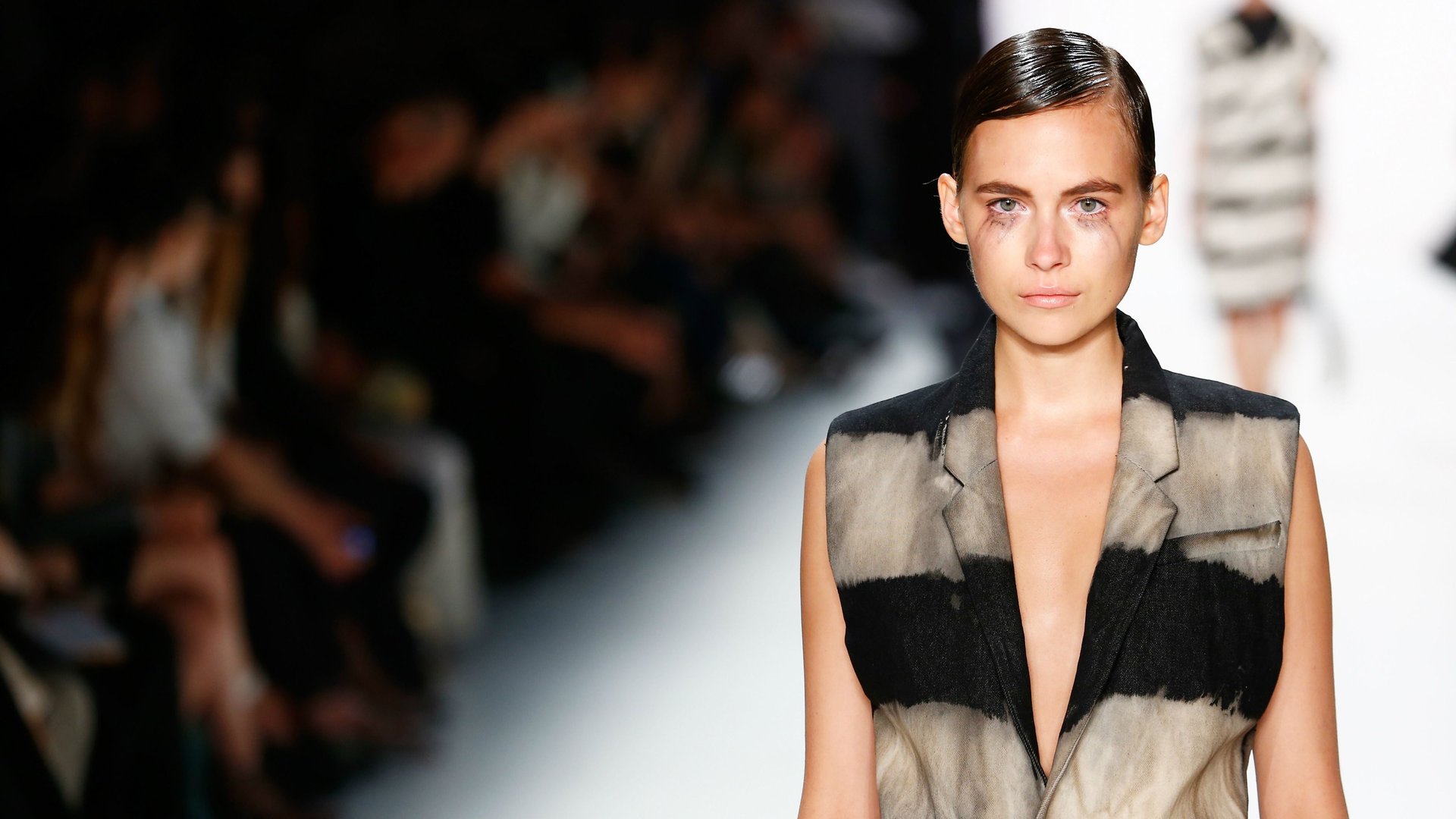

One of the funny things about going to a fashion show is how quickly it is over. There is a lot of waiting for it to begin—first to file into the tent or venue, then for VIPs to be shuffled to the front row and photographed there. Then, the lights go down, the lights go up, the music thumps, the models stomp, stomp, stomp around the runway. They all file out once more for a finale, the designer takes a bow, and you’re out. Once it starts, it’s usually over in about eight minutes.
But on Wednesday (July 8) a show at Berlin Fashion Week defiantly ignored that timeline. Esther Perbandt, a well-established designer here, handily filled the main tent at Mercedes Benz Fashion Week, even with a 9:30 pm slot. Berliners are known for staying out all night. But I am a New Yorker—an only mildly nocturnal creature, compared to the locals here, and a jet-lagged one at that—and when we filed into the tent around 10pm, it was sleep, more than partying, that I craved.
So I was relieved when the house lights went down, a blue light came up, and the voice of an opera singer filled the tent.
Act I
“Here we go,” I thought. A few long moments later I realized the voice was coming from an actual soprano—a tiny, androgynous figure all in black, who had emerged at the end of the very long runway. Then another singer—this one a man in white—appeared, accompanying her. It got dark again.
I shifted in my seat.
Their voices rose, with an electronic clapping beat behind them, and the lights came on. “Okay,” I thought, “now we’re on.”
A model all in black appeared at the stage entrance—which felt like it was about a quarter of a mile away—and began to walk, very, very slowly toward where I sat, near the pit of photographers at the runway’s end. Usually, photographers’ shutters clack at rapid-fire as the model speeds down the runway toward them. Not this night. They too seemed perplexed by the leisurely pace at which the model was approaching.
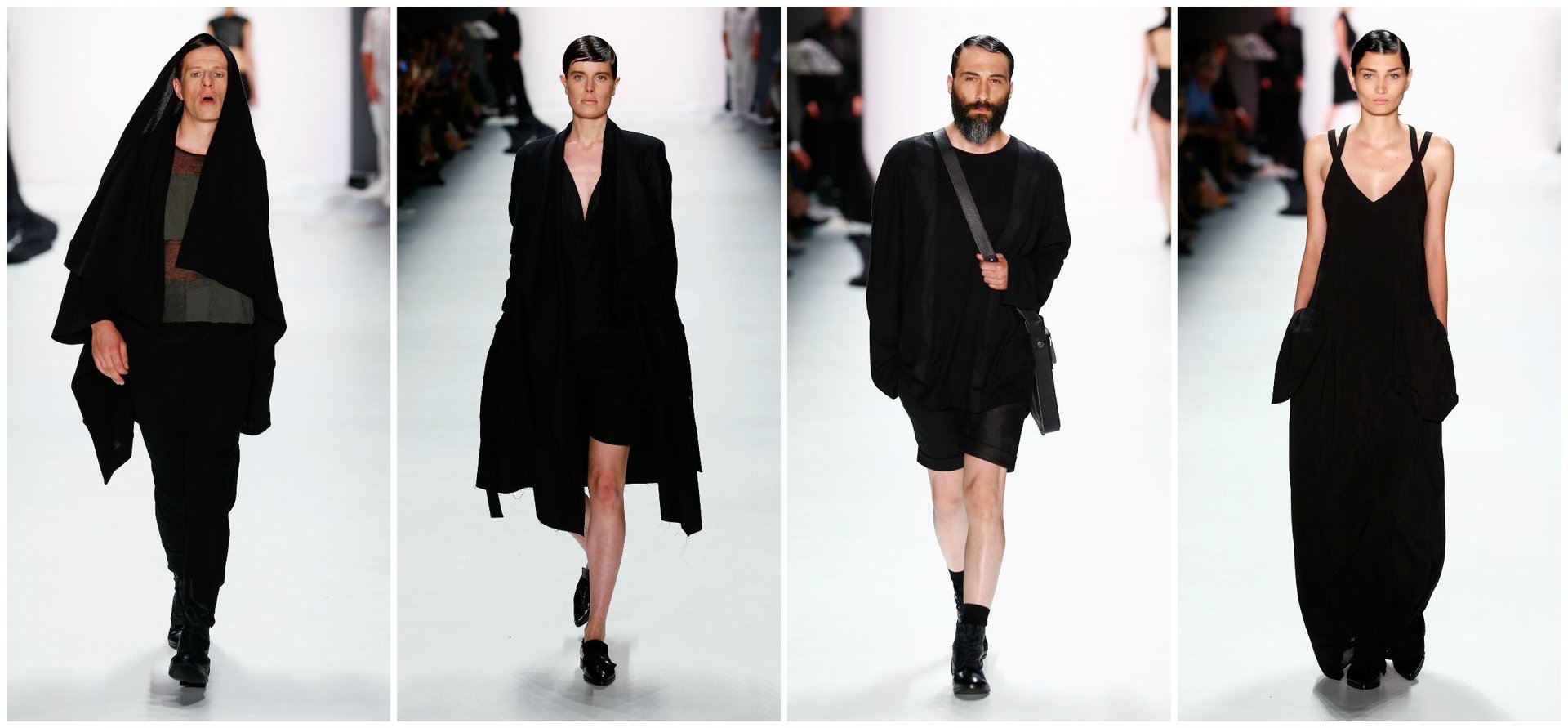
I could see, eventually, that she wore a loosely flowing black trench over a tailored blouse and shorts. Another female model emerged, this one in a little cropped vest and loose-fitting cropped trousers. Again, all black. The third model also wore black, and sauntered with a molasses swagger that culminated, quite a while later, at the runway’s end. There, he removed the shroud-like hood of his cardigan with great flourish.
The show continued this way for what felt like a very long time. Some of the all-black looks were lovely: a flowing maxi-dress with cris-crossing straps at its back caught my eye, as did a wide lattice-woven fabric, and some broad textured stripes—black-on-black, of course—on a long, gauzy skirt.
One of the male models casually pointed his hands like guns at the photographers when he reached the runway’s end. They had plenty of time to capture it.
Act II
The last model filed backstage, and the lights went down. Done, I thought. Then the lights came up again. The show started all over, with models emerging in white variations of the collection I had just seen.
A cream-colored sleeveless, short one-piece with tuxedo-styling particularly appealed, but I wondered if the show could have used an edit.
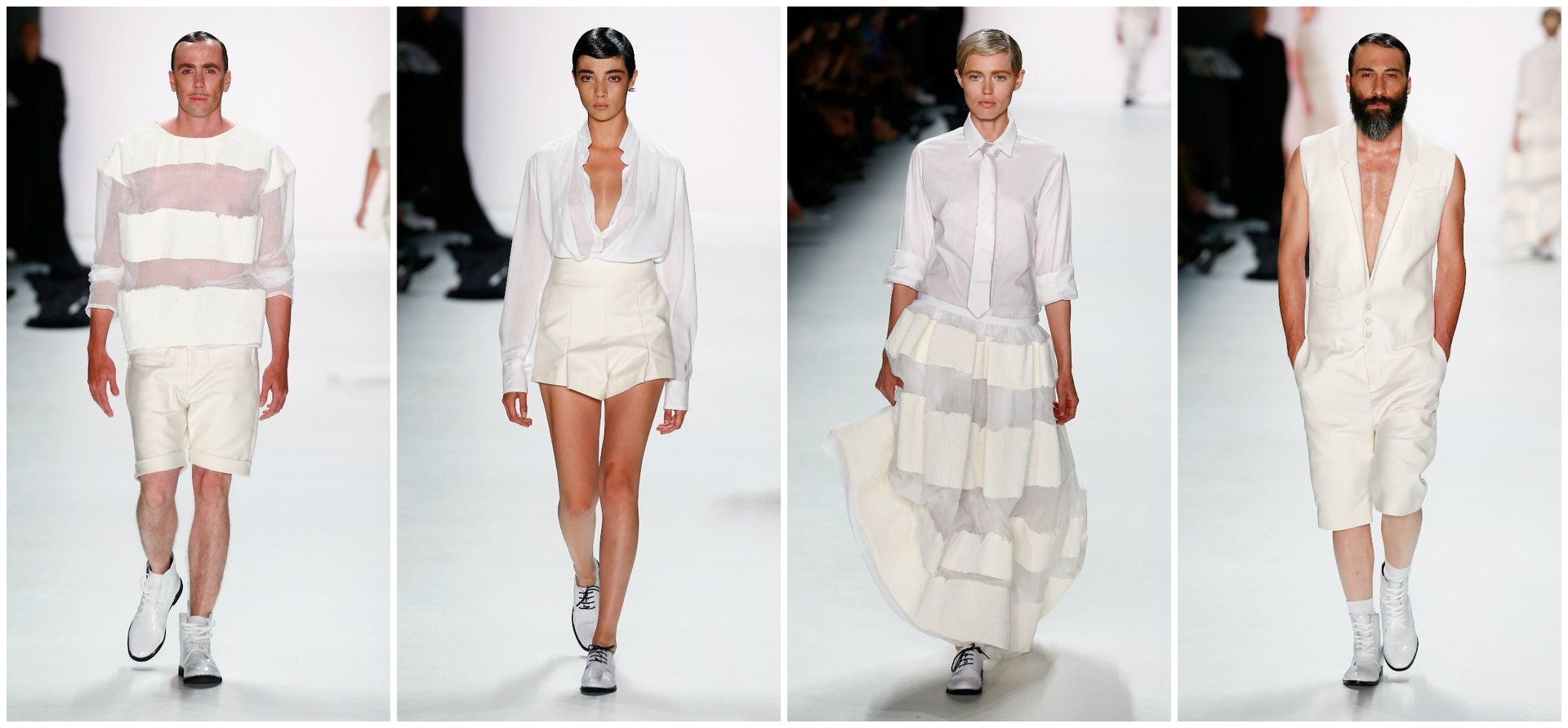
I was beginning to recognize the models, as they re-emerged yet again. Here is the guy with the impressive tattoos, the woman with the silver hair, the swashbuckler with the pencil mustache, the Stella Tennant lookalike.
The whole while, the opera singers kept singing at the runway’s edges.
Act III
Then a third act began, with the swashbuckler and his cohorts filing out at a similarly slow speed, in looks combining white and black. They were nice, but similar to what I’d seen: androgynous styling, deconstructed suiting separates, loosely pegged pants, and gauzy shapes given body by thick, printed stripes.
The lights went down, and came back up again. The models all marched out together for a finale—perhaps?—then applause.
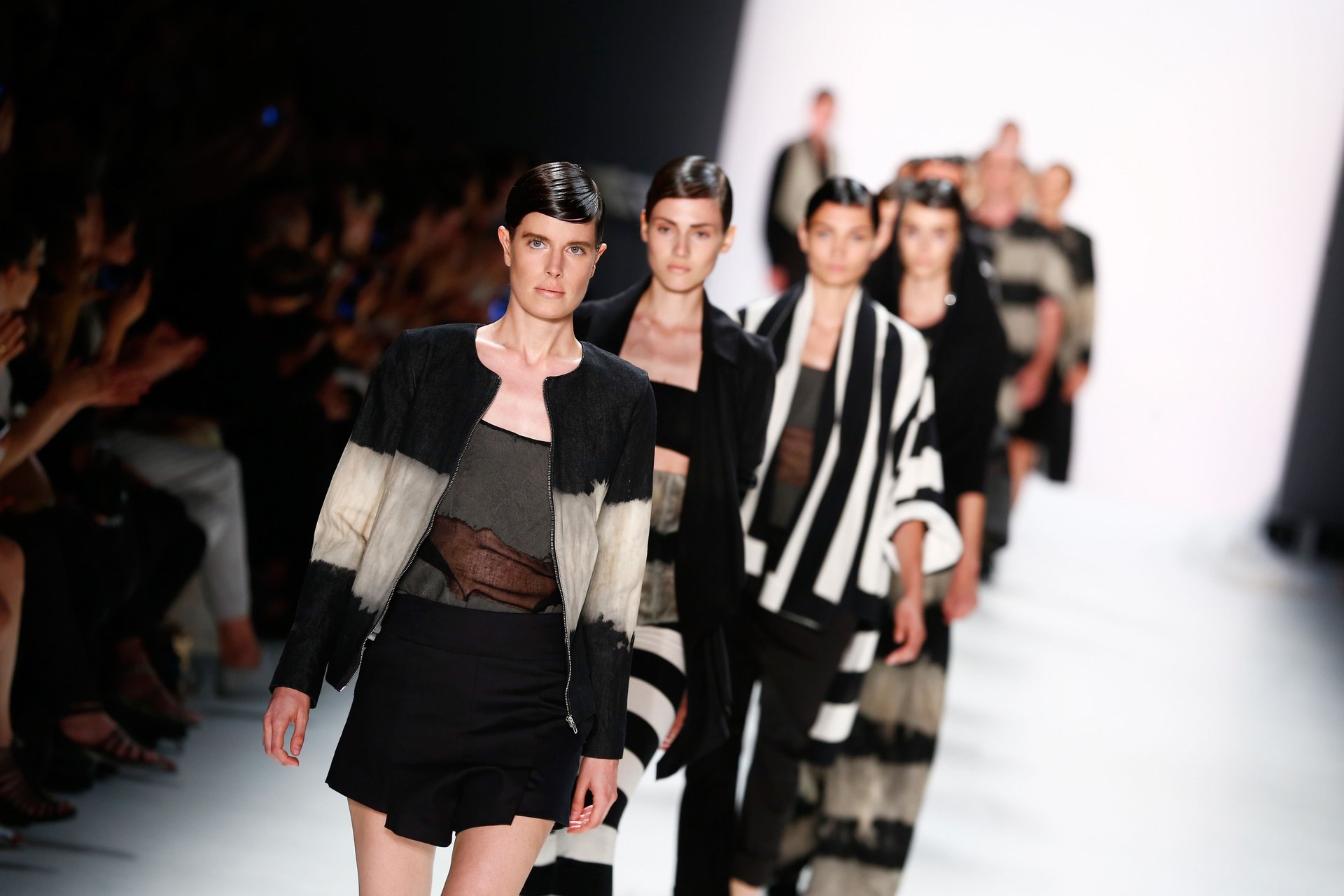
The lights went down yet again, and came back up to an empty stage. The crowd started to gather their bags, somewhat hesitantly, as if the seatbelt sign had not yet turned off.
It had not.
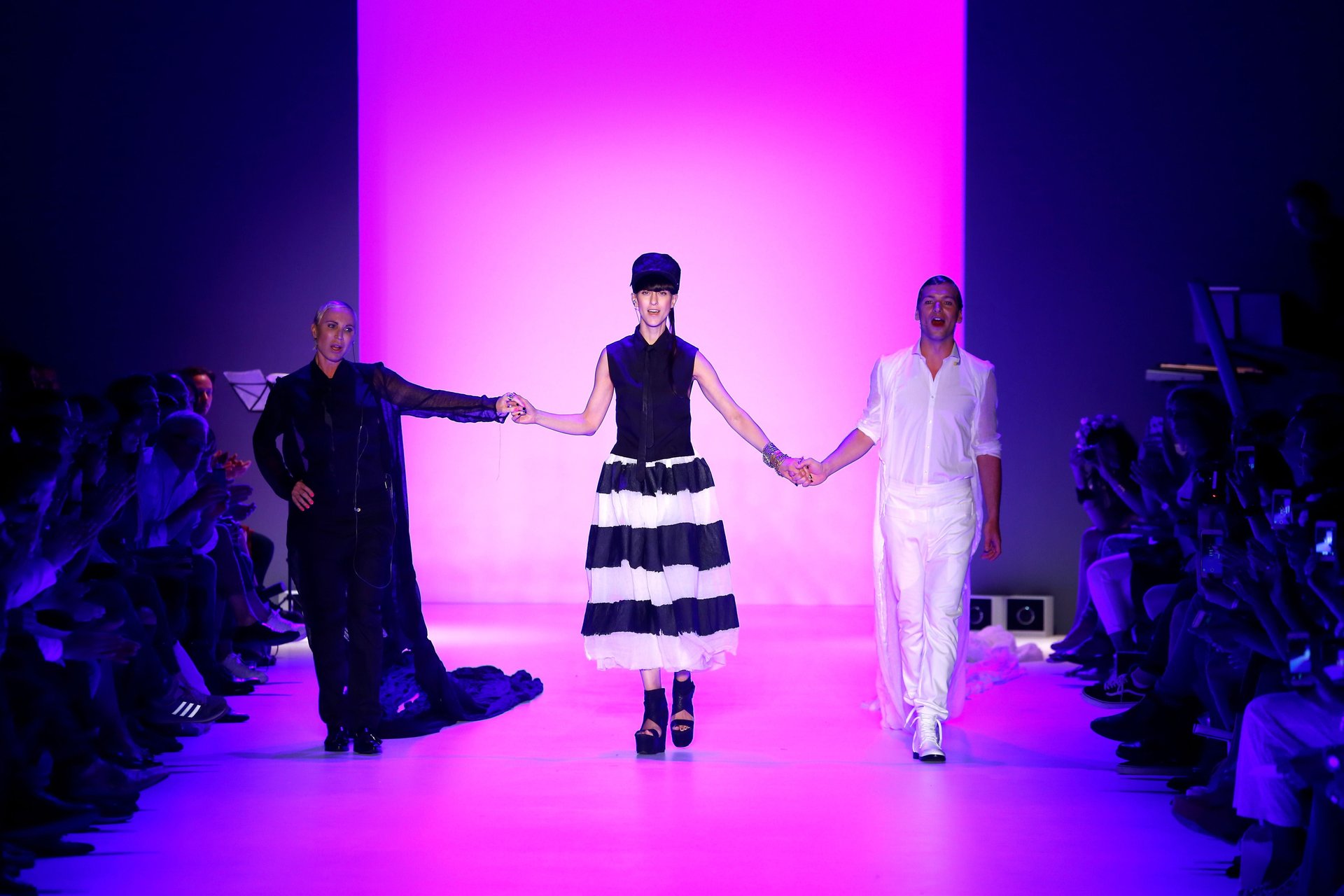
The singers re-emerged, this time a willowy figure in a striped skirt and exaggerated motorcycle cap between them. It was the designer, Esther Perbandt, and she appeared to be singing along. Applause. Then, they returned backstage. It was really over now.
I shouldered through the crowd and dashed backstage for a quick pre-arranged interview.
There, I could see the models’ makeup: devoid of color, but with long shadows of thin lashes, dashed below their eyes on onto their cheekbones.
“Tears for the impatient,” Perbandt said, telling me that this—the lack of patience I had guiltily experienced through her show—was actually her starting point for the collection.
“Because I am very impatient, but I am somehow the invention of slowlyness,” she said poetically in English, not the German designer’s first language. ”And I have to struggle with that,” she said. “It’s some acceptance for the impatient.”
There’s something in this. And as more time has passed since the show, I’ve come to appreciate it more. In theory, I have always valued the idea of patience with the creative process—I have argued for a slower fashion cycle that gives us more time to appreciate designers’ work (and more time for them to work on and produce it), as well as the clothing in our closets.
At least, that’s what I tell myself. Perbandt’s show had challenged my patience, and in doing so challenged me with a question: After the designer and her staff worked several months to construct her collection, why was it so hard for me to afford her a few more minutes to share it?
I asked if she specifically instructed the models to walk slowly for that reason. No, Perbandt replied. It just happened naturally. But when Sven Helbig, the German composer who did the music, suggested they could walk double-time, she declined.
“Maybe someone could get impatient,” she said. “But that’s okay.”